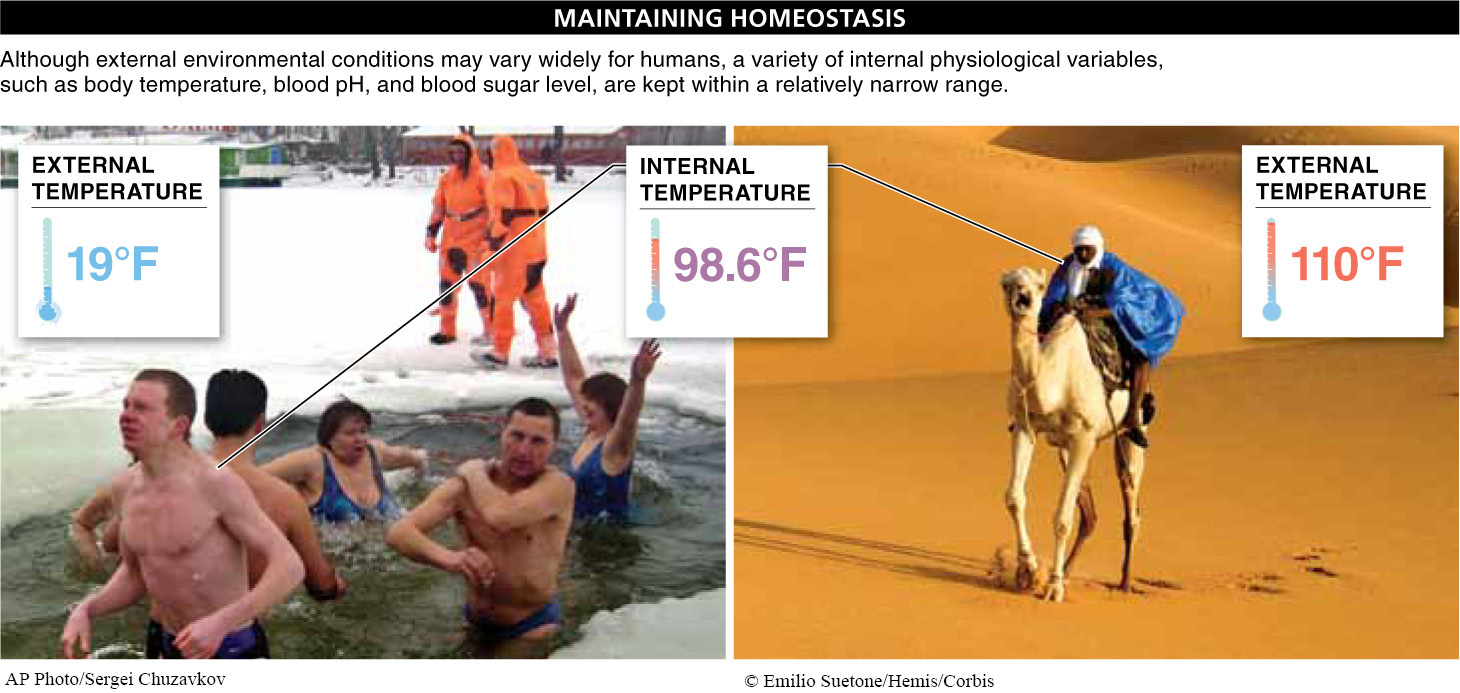All of the functions and activities of a single-
Like single-
With multicellularity and increasing size, then, an animal’s internal environment takes on greater importance than the external environment in influencing cell functioning. In vertebrates, this internal environment consists of the extracellular fluid (also called the interstitial fluid) that fills the space between cells, bathing the cells. This fluid is primarily water, but it also contains nutrients and raw materials for growth and development, as well as waste products that have diffused out of or been removed from cells. The volume of interstitial fluid is not insignificant. In fact, one-
One of the hallmarks of animal physiology, however, is that organisms generally maintain homeostasis, or the ability to remain within a narrow range of physical and chemical conditions, even in the face of changing external environmental forces. In this relatively constant, steady, internal environment, variables such as temperature, water-

Through homeostasis, organisms can maintain optimum metabolic functioning. For example, the work of cells, from DNA replication to protein production to intercellular communication, depends in large part on the activities of enzymes. In turn, an enzyme’s activity depends critically on the temperature and other characteristics of its immediate environment. Even slight changes in these variables can disrupt, reduce, or even stop enzyme functioning. And this can have catastrophic consequences, such as in the case of heat stroke described in Section 20-
806
Enzyme activity is just one of many facets of cell function influenced by temperature and other physical features of the cell’s internal environment; membrane permeability and the rates at which materials diffuse across membranes also respond to changes in the environment. In the following sections, we explore how homeostasis is maintained.
TAKE-HOME MESSAGE 20.8
Although the internal environment of multicellular animals is continuously influenced by their external environment, many animals maintain homeostasis: they keep a variety of internal physiological variables—
Although the temperature of your external environment varies significantly throughout the day and throughout the year, your internal body temperature remains relatively constant. Can you think of physiological responses you might exhibit in cold weather to maintain homeostasis?
These might include: shivering via muscular contraction; increasing metabolism to release heat, such as through metabolically breaking down fat; and also releasing heat through the process of active transport of Na+ and K+ ions across cell membranes.
807